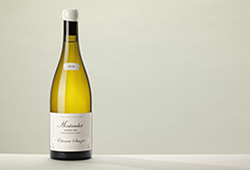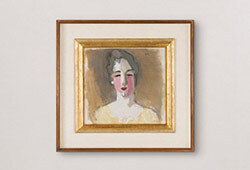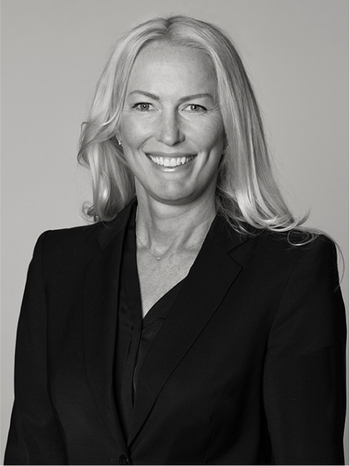Wilhelm Kåge
a faience vase, Gustavsberg studio, Sweden 1942.
Painted polychrome ornamental decor in horizontal bands, signed KÅGE with the studio mark 42, incised HANDDREJAD and factory stamp GUSTAVSBERG. Height 39 cm, diameter 17 cm.
The interior of the mouth rim with a small retouch, minor glaze crazing.
Literature
Gustaf Näsström, "Vårlig Fajans från Gustavsberg", see the vase illustrated in a review of the exhibition "Fajanser målade i vår", Stockholmstidningen, 18 May 1942.
More information
The studio mark, designed by Kåge, was first used at the exhibition "Fajanser målade i vår" in the Gustavsberg showroom at Birger Jarlsgatan in Stockholm in 1942. Stig Lindberg made his debut there with painted faience pieces together with Wilhelm Kåge. The exhibition was an acclaimed success by the critics.
Designer
Wilhelm Kåge was a Swedish artist, painter, and ceramicist. Between 1917 and 1949, he worked as artistic director at Gustavsberg porcelain factory.
Kåge studied at Valand konstskola in Gothenburg and later in Copenhagen, where he got to know artist Gösta Adrian-Nilsson (GAN) and became familiar with modern art. He studied graphic art in Munich and began his artistic career by designing posters for theaters and exhibitions. When Gustavsberg needed new products for the home Exhibition at Liljevalch in 1917, Kåge was hired. He developed 30 different tableware, colorful faience, stoneware, and series such as Carrara, Surrea, and Våga. In 1942, Kåge developed Gustavsberg's studio together with designer Stig Lindberg. The studio became an aesthetic laboratory for objets d'art.
At the Stockholm Exhibition in 1930, Kåge presented Gustavsberg's future sales success "Argenta", a series of objet d'art glazed mainly in green but also in red, blue, brown, and celadon green and painted with various silver decorations according to Kåge's sketches.
Read more











































